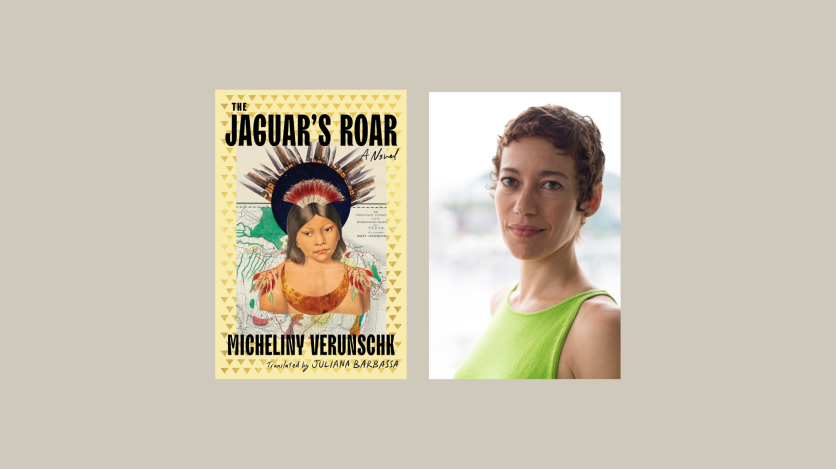Public Discussion: 6 pm
Member Reception: 7 pm
Share

The Jaguar's Roar book cover and Juliana Barbassa. (Author image: Nadia Sussman)
Overview
Join Americas Society as we host Juliana Barbassa, translator of The Jaguar's Roar, for a discussion. Originally published in Portuguese as O som do rugido da onça (Companhia das Letras, 2021), the novella by acclaimed Brazilian author Micheliny Verunschk won Brazil's prestigious Jabuti Award in the Literary Novel category in 2022. Verunschk's first novel to be translated, The Jaguar's Roar (Liveright) was published in English on December 2.
At the event, Barbassa will talk with Americas Society VP Brian Winter about the novel’s central themes and how she worked to bring such a quintessentially Brazilian story to a new audience. Following the public discussion, there will be a reception for members with Barbassa.
- Order The Jaguar's Roar here. The book will also be for sale at the event.
Barbassa is an award-winning author, who currently teaches in Rome, while also working as a non-fiction editor and translator. During her two-decade career as a journalist, she worked for the Associated Press, Americas Quarterly, and The New York Times.
About the book
The Jaguar's Roar takes as its starting point the real story of two Indigenous children taken from the Amazon to the Bavarian court in Munich in the early 1800s for display and study. The two German "scientists" who took them to Europe wrote extensively about Brazil, its flora and fauna, and included illustrations in their publications, so the images of the children are known in Brazil and beyond and part of the permanent display at the Itaú Cultural Institute in São Paulo. But the researchers noted nothing else about the children themselves, not even their names.
Verunschk encountered these images at the exhibition, and, frustrated by the void of information around the children, told a version of what could be their story in The Jaguar's Roar, weaving in a fictional narrative with historical documents, creating a sort of mosaic of voices and experiences that reflects some of what is jarring and disruptive in such a story.








